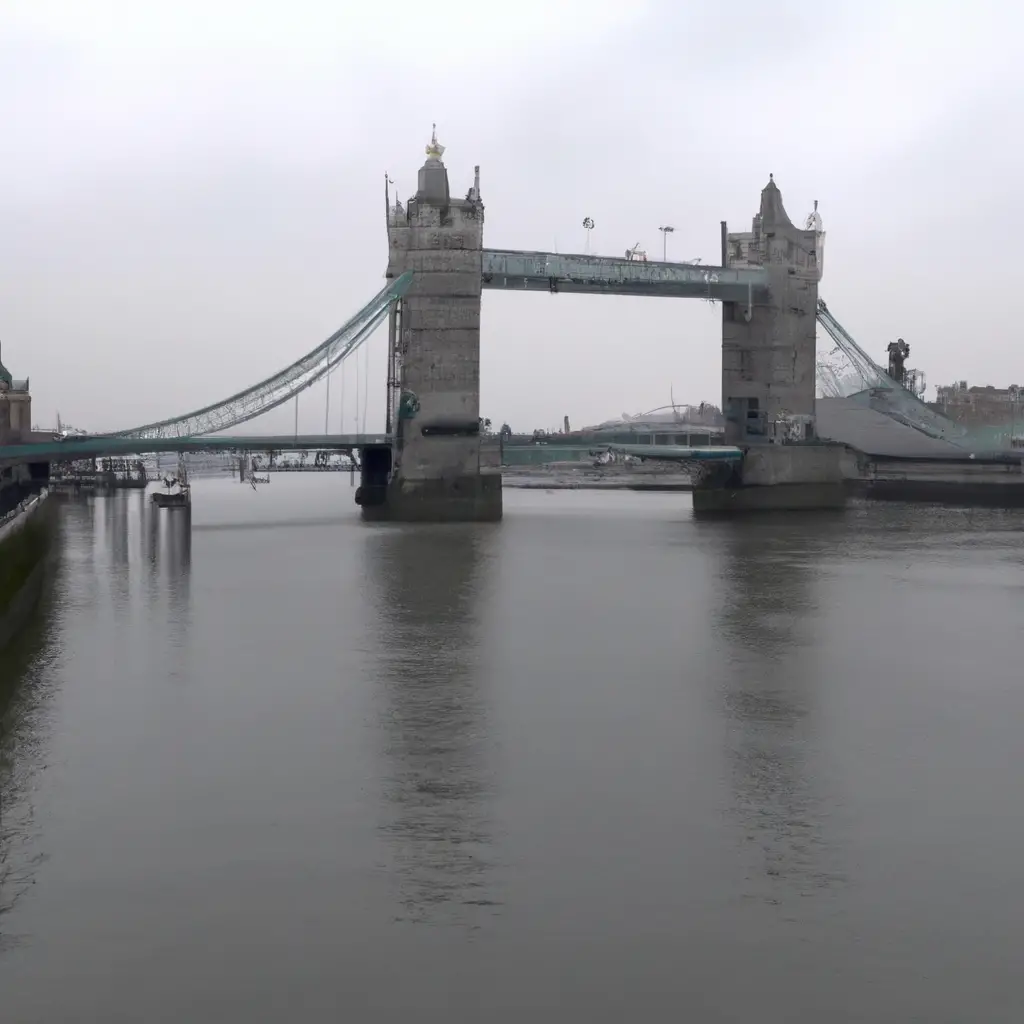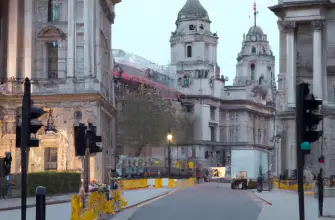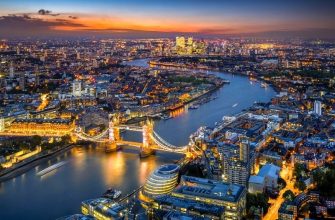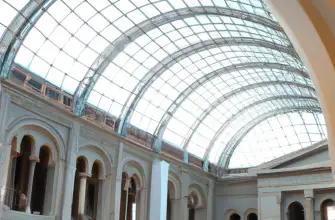“Uncover the beauty of London’s bridges, spanning centuries of history and innovation.”
London is a city that is renowned for its iconic bridges, which are not only functional but also serve as major tourist attractions. From the Tower Bridge to the Millennium Bridge and beyond, these structures are a testament to the city’s rich history and architectural prowess. In this article, we will explore some of London’s most magnificent bridges and discover what makes them so special.
Tower Bridge: A Symbol of London’s Industrial Revolution
London is a city that is steeped in history and culture, and one of the most iconic features of this great city is its bridges. From the majestic Tower Bridge to the modern Millennium Bridge, London’s bridges are a testament to the city’s engineering prowess and its rich history. In this article, we will explore some of the most famous bridges in London and discover the magnificence of these iconic structures.
Tower Bridge is perhaps the most famous bridge in London, and it is a symbol of the city’s industrial revolution. The bridge was built in the late 19th century and was designed to allow ships to pass through the River Thames without disrupting the flow of traffic on the road. Tower Bridge is a marvel of engineering, with its two massive towers and its intricate system of counterweights and hydraulic pumps.
One of the most impressive features of Tower Bridge is its bascule mechanism, which allows the bridge to be raised and lowered to allow ships to pass through. The bascule mechanism is powered by hydraulic pumps, which were state-of-the-art technology at the time the bridge was built. Today, Tower Bridge is still in use and is a popular tourist attraction, with visitors from all over the world coming to see this magnificent structure.
Another iconic bridge in London is the Millennium Bridge, which was built in the early 21st century to celebrate the new millennium. The bridge is a pedestrian-only bridge that spans the River Thames and connects the Tate Modern art gallery on the south bank with St. Paul’s Cathedral on the north bank. The Millennium Bridge is a modern marvel of engineering, with its sleek design and its use of advanced materials.
One of the most impressive features of the Millennium Bridge is its use of suspension technology, which allows the bridge to be both strong and flexible. The bridge is made of steel and has a unique design that allows it to sway slightly in the wind, giving pedestrians a thrilling experience as they cross the river. The Millennium Bridge is a popular destination for tourists and locals alike, and it is a testament to London’s continued innovation and creativity.
Beyond these two iconic bridges, London is home to many other magnificent structures that span the River Thames. The Albert Bridge, for example, is a beautiful suspension bridge that was built in the mid-19th century and is known for its ornate design and its use of decorative lighting. The Waterloo Bridge is another famous bridge in London, and it is known for its stunning views of the city and its use of innovative engineering techniques.
In conclusion, London’s bridges are a testament to the city’s rich history and its continued innovation and creativity. From the majestic Tower Bridge to the modern Millennium Bridge and beyond, these iconic structures are a must-see for anyone visiting London. Whether you are a history buff, an engineering enthusiast, or simply someone who appreciates the beauty of great architecture, London’s bridges are sure to leave you in awe. So why not take a stroll along the River Thames and discover the magnificence of these iconic structures for yourself?
The History and Design of London’s Millennium Bridge
London is a city that is steeped in history and culture, and one of the most iconic features of the city are its bridges. From the Tower Bridge to the Millennium Bridge and beyond, these structures are not only functional but also works of art that have stood the test of time. In this article, we will explore the history and design of London’s Millennium Bridge, one of the most modern and innovative bridges in the city.
The Millennium Bridge, also known as the London Millennium Footbridge, is a pedestrian-only suspension bridge that spans the River Thames. It was opened in 2000, as part of the celebrations for the new millennium. The bridge was designed by the architectural firm Foster and Partners, in collaboration with the engineering firm Arup. The design of the bridge was inspired by the idea of a blade of grass bending in the wind, and this is reflected in the sleek and elegant curves of the structure.
The Millennium Bridge is a unique structure in many ways. It is the first pedestrian-only bridge to be built over the River Thames in more than a century, and it is also the first bridge in the world to use a system of dampers to control the movement of the bridge. This was necessary because when the bridge first opened, it was found to sway quite dramatically when large numbers of people walked across it. The dampers were installed to counteract this movement, and they have been very successful in making the bridge more stable.
The bridge is also notable for its use of materials. The deck of the bridge is made from steel, while the handrails are made from stainless steel. The suspension cables are made from high-strength steel, and they are anchored to the ground on either side of the river. The use of these materials gives the bridge a modern and industrial look, which is in keeping with the surrounding architecture of the area.
One of the most striking features of the Millennium Bridge is its lighting. The bridge is illuminated at night by a series of LED lights, which change color depending on the time of year and the events taking place in the city. This creates a stunning visual effect, and it has made the bridge a popular destination for tourists and locals alike.
The Millennium Bridge has become an important part of London’s landscape, and it has played a significant role in the regeneration of the area around it. The bridge connects the Tate Modern gallery on the south bank of the river with St. Paul’s Cathedral on the north bank, and it has helped to bring these two cultural landmarks closer together. The bridge has also become a popular location for events, such as the annual London Marathon, which crosses the bridge as part of its route.
In conclusion, the Millennium Bridge is a testament to the ingenuity and creativity of London’s architects and engineers. Its sleek and elegant design, use of innovative materials, and unique features such as its lighting and dampers make it a true icon of the city. Whether you are a tourist or a local, a walk across the Millennium Bridge is an experience not to be missed. So why not take a stroll across this magnificent structure and discover for yourself the beauty and innovation of London’s bridges?
Exploring the Thames River: A Tour of London’s Iconic Bridges

London is a city that is steeped in history and culture, and one of the most iconic features of this great city is the River Thames. The Thames is a vital part of London’s identity, and it is home to some of the most magnificent bridges in the world. From Tower Bridge to Millennium Bridge and beyond, these bridges are not only functional but also works of art that are worth exploring.
Tower Bridge is perhaps the most famous of all the bridges in London. It is a symbol of the city and is instantly recognizable with its two towers and suspended walkway. Tower Bridge was built in 1894 and is still in use today. It is a bascule bridge, which means that it can be raised to allow ships to pass through. Visitors can take a tour of the bridge and even walk across the suspended walkway to get a stunning view of the city.
Another iconic bridge in London is the Millennium Bridge. This pedestrian-only bridge was opened in 2000 and spans the River Thames between the Tate Modern and St. Paul’s Cathedral. The bridge is a marvel of engineering and design, with its sleek, modern lines and suspension cables. It is a popular spot for tourists and locals alike, and it offers stunning views of the city and the river.
The Albert Bridge is another beautiful bridge that is worth exploring. This bridge was built in 1873 and is a suspension bridge that spans the River Thames between Chelsea and Battersea. The bridge is known for its ornate design, with its intricate ironwork and decorative lights. It is a popular spot for photographers and is especially beautiful at night when it is lit up.
The Waterloo Bridge is another iconic bridge in London. This bridge was built in 1945 and is a concrete arch bridge that spans the River Thames between the South Bank and the Strand. The bridge is known for its stunning views of the city, and it is a popular spot for tourists and locals alike. It is also a popular spot for protests and demonstrations, as it offers a prime location for people to gather and make their voices heard.
The Blackfriars Bridge is another beautiful bridge that is worth exploring. This bridge was built in 1869 and is a five-arch bridge that spans the River Thames between the City of London and Southwark. The bridge is known for its ornate design, with its decorative ironwork and stone pillars. It is also a popular spot for cyclists, as it offers a dedicated cycle lane.
The London Bridge is perhaps the most famous of all the bridges in London. This bridge has a long and storied history, dating back to the Roman era. The current bridge was built in 1973 and is a box girder bridge that spans the River Thames between the City of London and Southwark. The bridge is known for its stunning views of the city, and it is a popular spot for tourists and locals alike.
In conclusion, London’s iconic bridges are not only functional but also works of art that are worth exploring. From Tower Bridge to Millennium Bridge and beyond, these bridges offer stunning views of the city and the River Thames. Whether you are a tourist or a local, taking a tour of these bridges is a must-do activity in London. So, grab your camera and get ready to discover the magnificence of London’s iconic bridges.
London’s Bridges as Landmarks: A Guide for Tourists
London is a city that is known for its iconic landmarks, and its bridges are no exception. From the Tower Bridge to the Millennium Bridge and beyond, London’s bridges are not only functional but also beautiful works of art that have become symbols of the city’s rich history and culture. If you’re planning a trip to London, exploring the city’s bridges is a must-do activity. In this article, we’ll take a closer look at some of London’s most famous bridges and what makes them so special.
Tower Bridge
Perhaps the most famous of all London’s bridges, the Tower Bridge is an iconic symbol of the city. Built in 1894, the bridge is a marvel of Victorian engineering and design. Its distinctive towers and bascules make it instantly recognizable, and it has been featured in countless movies, TV shows, and photographs over the years. Visitors can take a tour of the bridge’s engine rooms and walk across the high-level walkways for stunning views of the city.
Millennium Bridge
The Millennium Bridge is a pedestrian-only bridge that spans the River Thames between the Tate Modern and St. Paul’s Cathedral. It was opened in 2000 to celebrate the new millennium and has since become a popular attraction for tourists and locals alike. The bridge’s sleek, modern design is a stark contrast to the historic buildings that surround it, and it offers stunning views of the river and the city skyline.
London Bridge
While not as visually striking as some of the other bridges on this list, London Bridge is still an important landmark in the city’s history. The current bridge was built in 1973, but there has been a bridge at this location since Roman times. The bridge has played a significant role in the city’s development over the centuries, and it is now a busy thoroughfare for both pedestrians and vehicles.
Westminster Bridge
Westminster Bridge is another iconic London landmark that offers stunning views of the city. The bridge was built in 1862 and is famous for its green color, which was chosen to match the seats in the House of Commons. From the bridge, visitors can see some of London’s most famous landmarks, including the Houses of Parliament, Big Ben, and the London Eye.
Blackfriars Bridge
Blackfriars Bridge is a railway bridge that spans the River Thames and is one of the oldest bridges in London. The current bridge was built in 1869, but there has been a bridge at this location since the 13th century. The bridge is known for its distinctive red pillars and offers stunning views of the city, including St. Paul’s Cathedral and the Shard.
In conclusion, London’s bridges are not only functional but also beautiful works of art that have become symbols of the city’s rich history and culture. From the Tower Bridge to the Millennium Bridge and beyond, each bridge has its own unique story to tell and offers visitors a chance to experience the city from a different perspective. Whether you’re a first-time visitor or a seasoned traveler, exploring London’s bridges is a must-do activity that is sure to leave you in awe of the city’s magnificence. So, grab your camera and get ready to discover the beauty of London’s iconic bridges.
The Role of London’s Bridges in Modern Transportation
London is a city that is steeped in history and culture, and one of the most iconic features of the city is its bridges. From the Tower Bridge to the Millennium Bridge and beyond, these structures have played a vital role in the transportation of people and goods throughout the city for centuries.
The Tower Bridge is perhaps the most famous of all the bridges in London. Built in the late 19th century, it is a symbol of the city and a testament to the engineering prowess of the time. The bridge was designed to allow large ships to pass through the Thames while still providing a crossing for pedestrians and vehicles. Today, it remains a popular tourist attraction and a vital part of the city’s transportation infrastructure.
Another iconic bridge in London is the Millennium Bridge. This pedestrian-only bridge was built in the early 21st century and provides a stunning view of the city. It is a popular spot for tourists and locals alike, and it has become a symbol of modern London.
But these two bridges are just the tip of the iceberg when it comes to the role of London’s bridges in modern transportation. The city is home to dozens of bridges, each with its own unique history and significance.
One of the most important roles that London’s bridges play is in connecting different parts of the city. The Thames is a major barrier to transportation, and without these bridges, it would be much more difficult for people and goods to move around the city. Whether it’s commuters traveling to work or goods being transported to market, the bridges of London are essential to keeping the city moving.
In addition to their practical role in transportation, London’s bridges also have a cultural significance. They are a testament to the city’s history and a symbol of its resilience. Many of these bridges have survived wars, fires, and other disasters, and they serve as a reminder of the city’s ability to overcome adversity.
But perhaps the most important role that London’s bridges play is in inspiring people. These structures are not just functional; they are also beautiful works of art. From the intricate details of the Tower Bridge to the sleek modern design of the Millennium Bridge, these structures are a testament to human creativity and ingenuity.
For visitors to London, exploring the city’s bridges is a must-do activity. Whether you’re walking across the Millennium Bridge or taking a boat tour of the Thames, there are countless ways to experience the magnificence of these structures. And for locals, the bridges of London are a reminder of the city’s rich history and a source of pride.
In conclusion, London’s bridges are more than just a means of transportation. They are a symbol of the city’s history, culture, and resilience. From the Tower Bridge to the Millennium Bridge and beyond, these structures have played a vital role in the transportation of people and goods throughout the city for centuries. And as the city continues to grow and evolve, these bridges will remain an essential part of its infrastructure and a source of inspiration for generations to come.
The Future of London’s Bridges: Innovations and Sustainability
London is a city that is known for its iconic landmarks, and its bridges are no exception. From the Tower Bridge to the Millennium Bridge, these structures have become symbols of the city’s rich history and culture. However, as the city continues to grow and evolve, so too must its bridges. In this article, we will explore the future of London’s bridges, including the innovations and sustainability measures that are being implemented to ensure that these structures continue to serve the city for generations to come.
One of the most exciting developments in the world of bridge design is the use of new materials and construction techniques. For example, the Garden Bridge, which is currently under construction, will be made entirely of steel and will feature a unique design that incorporates gardens and green spaces. This innovative approach to bridge design not only creates a beautiful and functional structure, but it also helps to promote sustainability by providing a space for plants and wildlife to thrive.
Another important aspect of the future of London’s bridges is sustainability. As the city continues to grow and expand, it is essential that its infrastructure is designed with the environment in mind. This means using materials that are sustainable and environmentally friendly, as well as incorporating features that promote energy efficiency and reduce waste.
One example of this is the Blackfriars Bridge, which was recently renovated to include solar panels that generate electricity for the bridge’s lighting and other systems. This not only reduces the bridge’s carbon footprint, but it also helps to save money on energy costs.
In addition to these innovations, there are also a number of ongoing efforts to improve the safety and accessibility of London’s bridges. For example, the Millennium Bridge, which was originally plagued by stability issues, has been retrofitted with dampers and other features to improve its stability and reduce the risk of accidents.
Similarly, the Tower Bridge, which is one of the most iconic structures in the city, has undergone a number of renovations in recent years to improve its accessibility for pedestrians and cyclists. This includes the installation of new lighting and signage, as well as the creation of dedicated lanes for cyclists and pedestrians.
Overall, the future of London’s bridges is bright and exciting. With new materials, innovative designs, and a focus on sustainability and safety, these structures will continue to serve the city for generations to come. Whether you are a resident or a visitor, taking the time to explore these iconic landmarks is a must-do experience that will leave you in awe of the magnificence of London’s bridges.
Q&A
1. What are some of London’s iconic bridges?
Tower Bridge, Millennium Bridge, London Bridge, Waterloo Bridge, and Blackfriars Bridge are some of London’s iconic bridges.
2. What is the history behind Tower Bridge?
Tower Bridge was built in 1894 and is a combination of a suspension and a bascule bridge. It was designed to allow tall ships to pass through the River Thames.
3. What is unique about the Millennium Bridge?
The Millennium Bridge is a pedestrian-only suspension bridge that was opened in 2000. It is unique because it is the first new bridge to be built over the Thames in over a century.
4. What is the significance of London Bridge?
London Bridge has a long history and has been rebuilt several times. It is now a modern concrete and steel bridge that connects the City of London with Southwark.
5. What is the design of Waterloo Bridge?
Waterloo Bridge is a concrete arch bridge that was built during World War II. It is known for its elegant design and has been featured in several films and TV shows.
6. What is the importance of London’s bridges?
London’s bridges are not only important for transportation but also for the city’s history and culture. They are iconic landmarks that attract tourists from all over the world.









